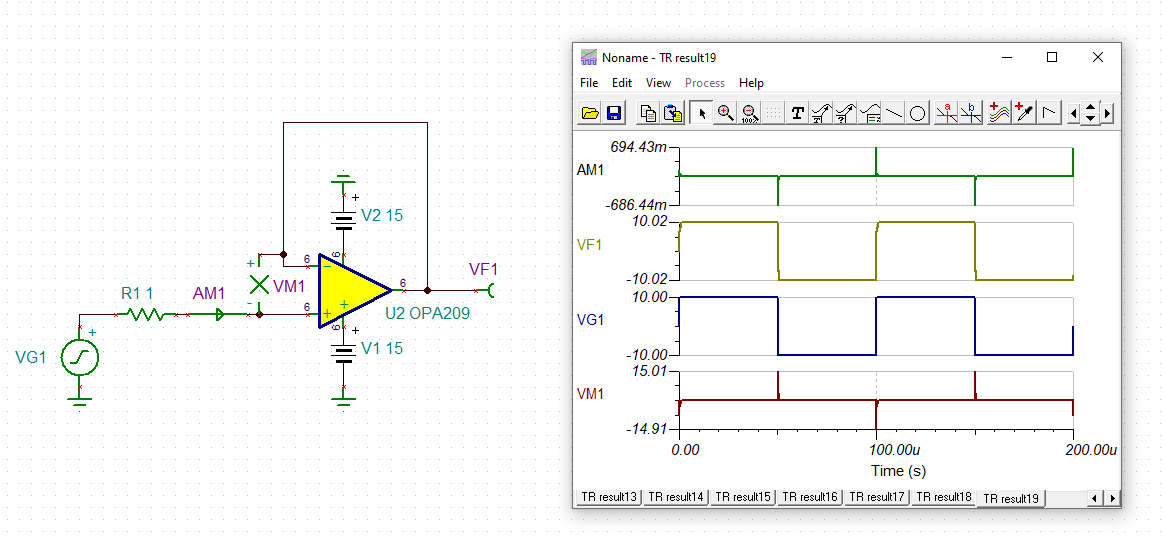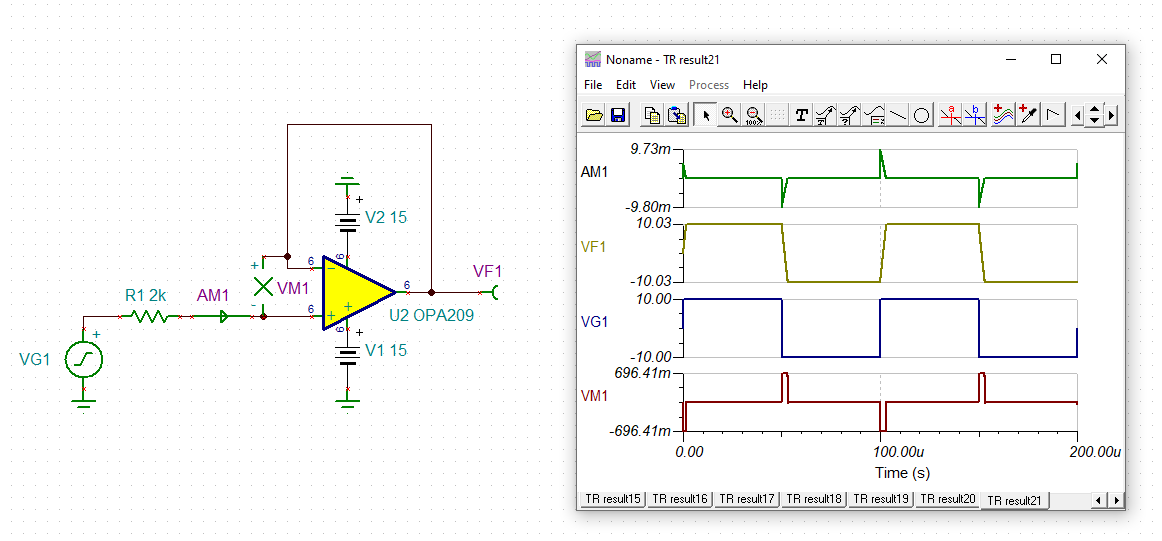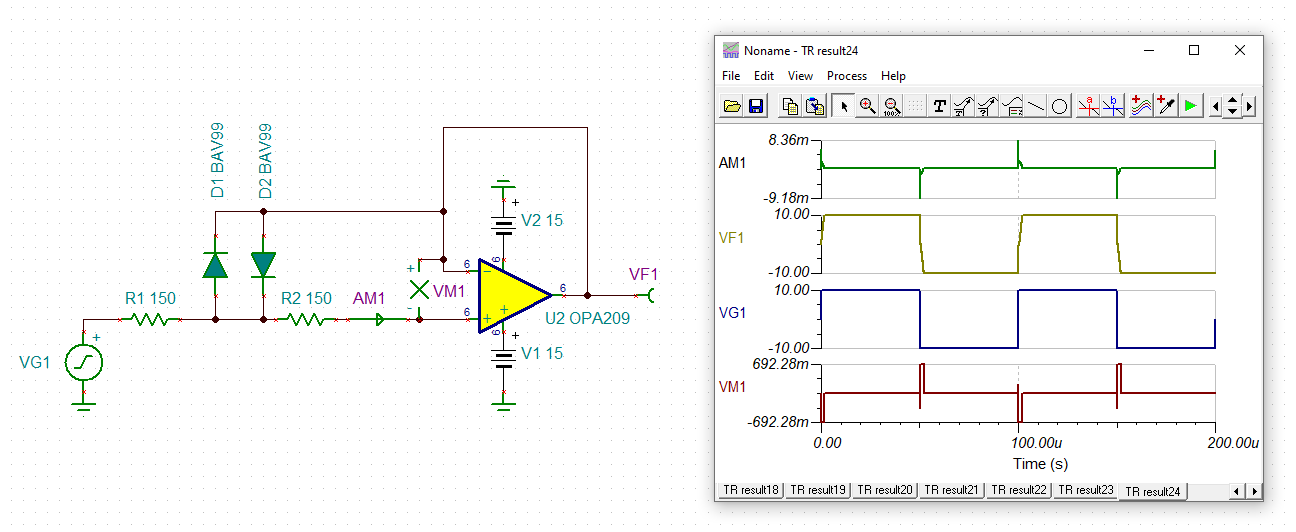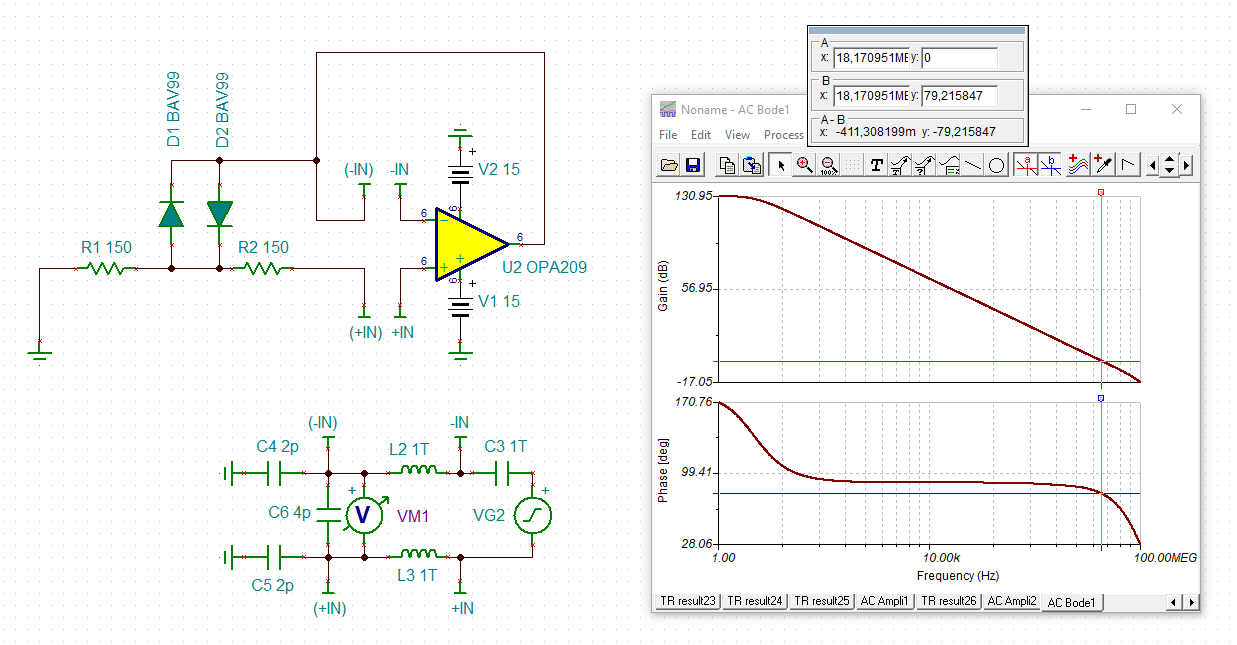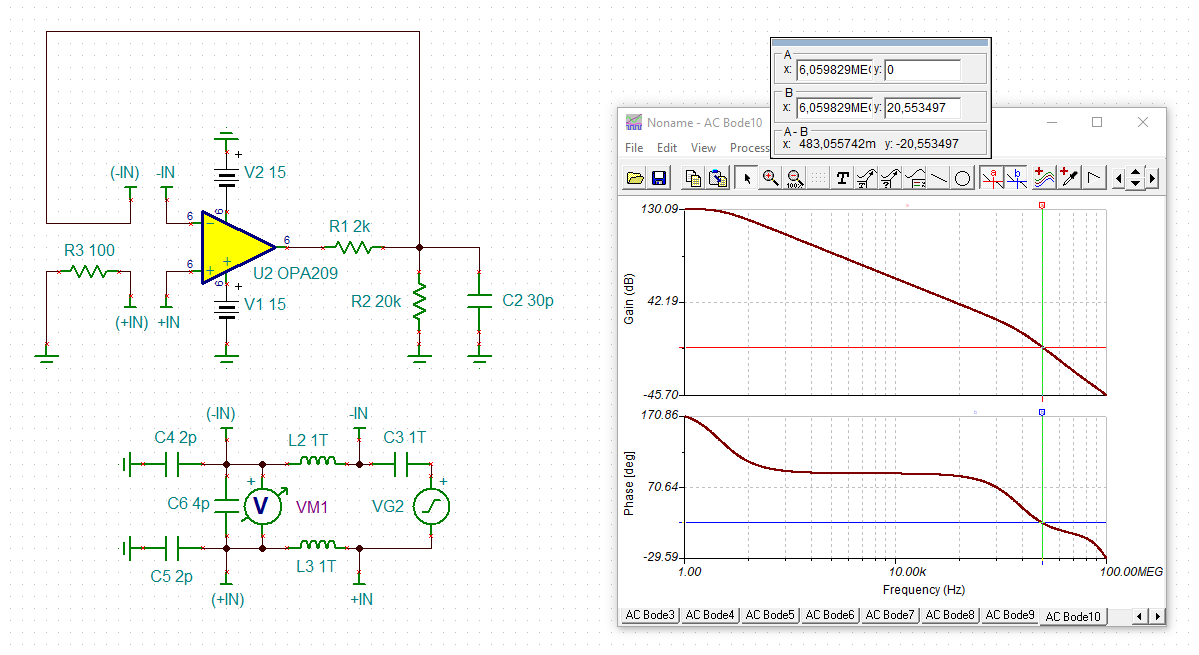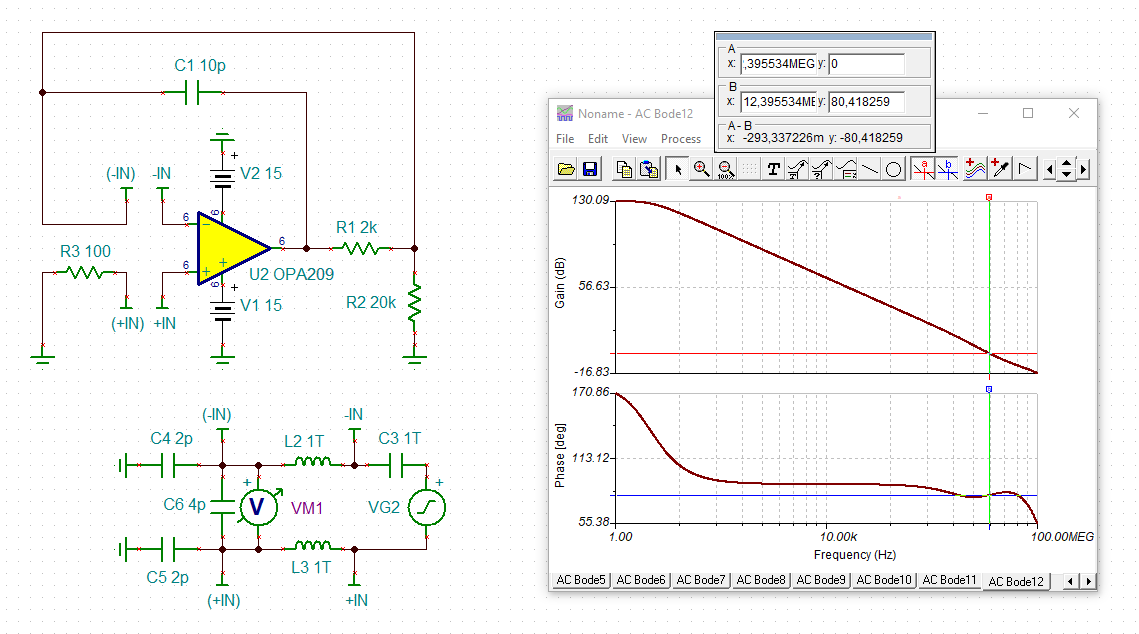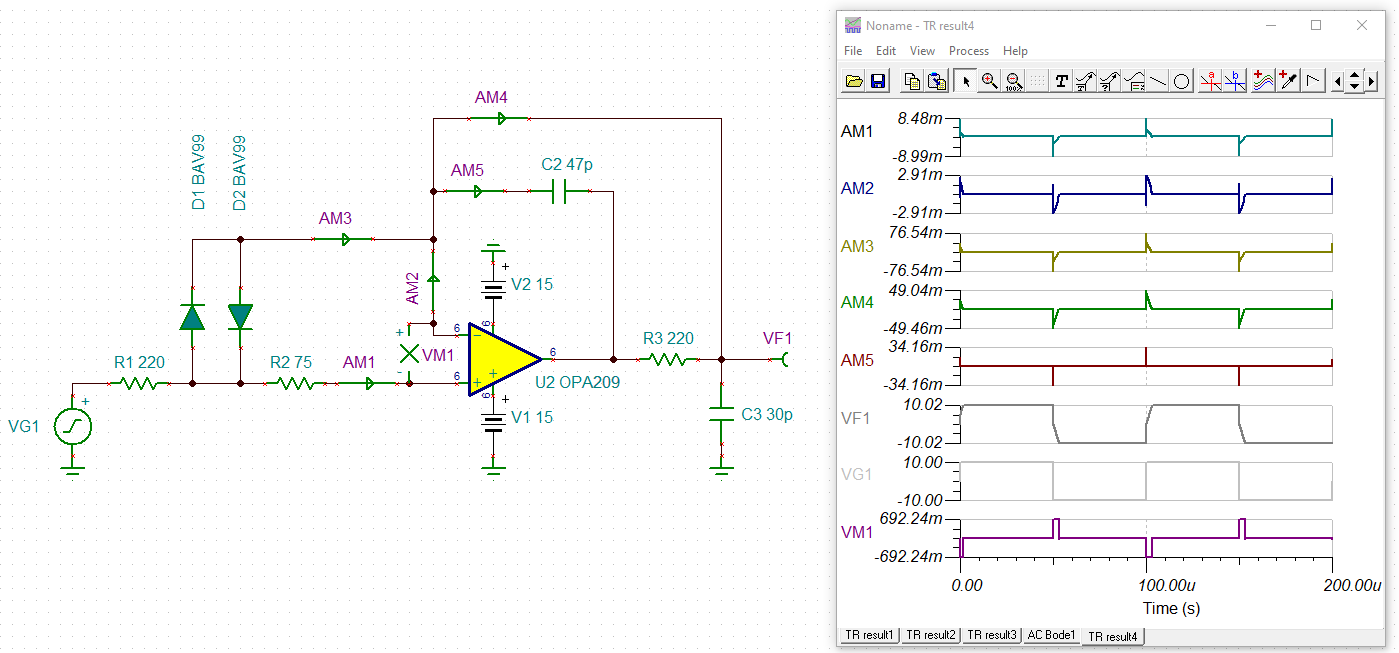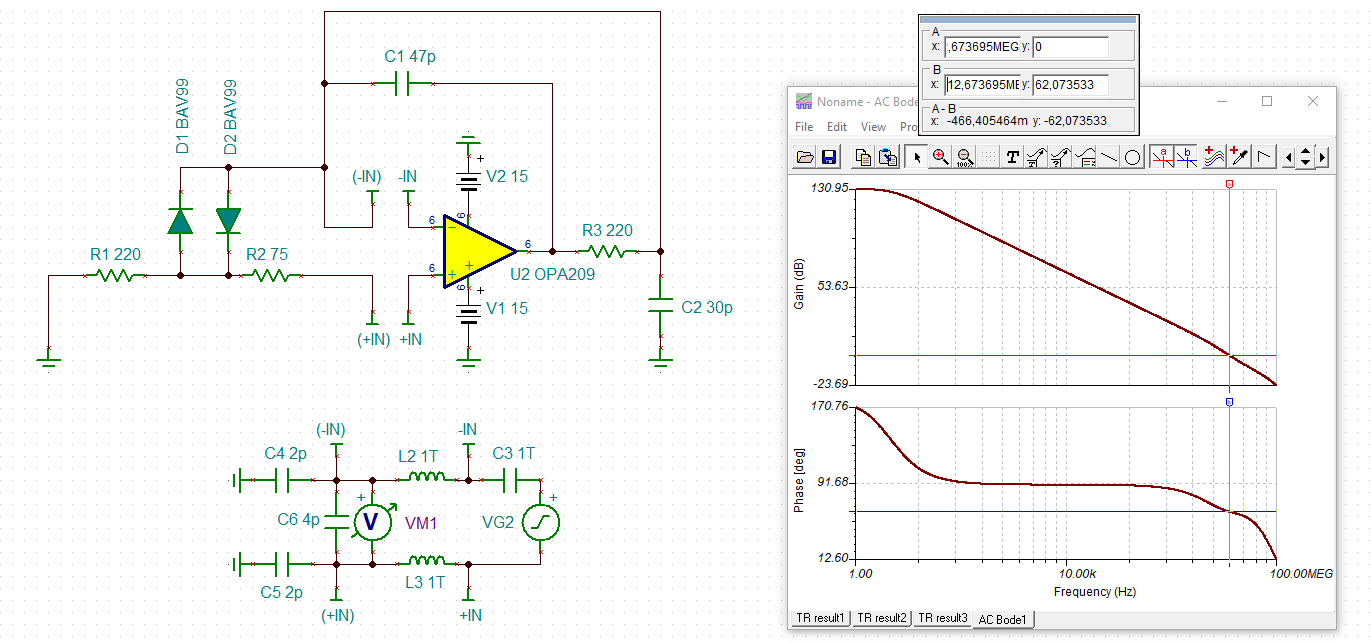Other Parts Discussed in Thread: OPA145
Hi,
if an op-amp voltage follower is behind a multiplexer, the input voltage of the op-amp might rise or fall faster than the slew rate of the op-amp and current might flow through the input protection diodes towards the output/load.
This current must be limited to a maximum of 10mA.
IIRC one can either connect a resistor between the mux and the non-inverting input of the op-amp or a resistor between the op-amp's output and the inverting input (so the series connection of the input and the feedback resistor determine the maximum current through the input protection diodes).
Unfortunately, both resistors would degrade the noise performance.
Can these resistors be omitted if the load has a high enough impedance?
Like if the op-amp would drive a 20k resistive load to GND, even with a +-15V square wave input the current through the load never exceeds 7.5mA, so the op-amp should be safe even without any input- or feedback resistor.
This would mean that the current limiting resistance value would be input-R plus feedback-R plus load-R?
Or would the current through the input protection diodes also flow into the op-amp's output?
The output impedance of the OPA209 looks like 26µF in series with 3 ohms and 2.4µH, which would result in a 0.78mAs pulse (78ms at 10mA or 7.8ms at 100mA and so on).
Would the input protection diodes (or the op-amp) survive the according energy?


